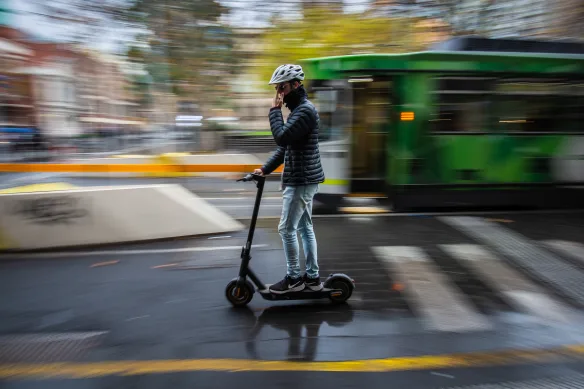In today’s fast-paced world, urban mobility is undergoing a significant transformation. With the increasing need for sustainable transportation options, electric scooters have emerged as a promising solution. These nifty two-wheelers are changing the way we commute, offering convenience, eco-friendliness, and a touch of fun to our daily travels. In this blog, we’ll explore the world of electric scooters, highlighting their benefits, drawbacks, and their role in shaping the future of urban mobility.
- The Electric Scooter Revolution
Electric scooters, often referred to as e-scooters, are compact, battery-powered vehicles designed for short-distance travel in urban areas. They’ve taken the world by storm, and it’s not hard to see why. Here are some reasons behind their popularity:
- Eco-Friendly: Electric scooters produce zero emissions, making them a sustainable and eco-friendly mode of transportation, contributing to reduced air pollution and greenhouse gas emissions.
- Convenience: E-scooters are incredibly convenient. They can be rented via smartphone apps, offering a quick and easy way to get around town. Riders can pick up and drop off e-scooters at designated docking stations or simply leave them in convenient spots when they’re done.
- Cost-Effective: Compared to owning a car or using rideshare services regularly, electric scooters are a budget-friendly option. Riders only pay for the distance they travel.
- Traffic Solutions: In congested cities, electric scooters help reduce traffic congestion, offering a solution to the “last-mile” problem for commuters who use public transportation.
- Pros and Cons
Like any mode of transportation, electric scooters come with their own set of advantages and disadvantages:
Pros:
- Eco-Friendly: As mentioned, e-scooters are environmentally friendly, helping to reduce pollution and reliance on fossil fuels.
- Easy Parking: Parking an e-scooter is a breeze. You can often leave them near your destination without the hassle of finding a parking spot.
- Exercise: Riding an electric scooter provides a bit of physical activity, as you use your balance and muscles to stay upright.
- Versatility: E-scooters can be used for various purposes, such as commuting, running errands, or just exploring your city.
Cons:
- Safety Concerns: Safety is a significant issue with e-scooters. Accidents can happen, and riders are more vulnerable in traffic than drivers of larger vehicles.
- Limited Range: Electric scooters typically have a limited range before the battery needs recharging, making them less suitable for long trips.
- Weather Dependence: E-scooters are less practical during adverse weather conditions, such as heavy rain or snow.
- The Role in Future Mobility
Electric scooters are here to stay, and they have a promising role in the future of urban mobility. As cities aim to reduce congestion and pollution, e-scooters offer a sustainable and convenient solution. Here’s how they’ll contribute:
- First-Mile/Last-Mile Solution: E-scooters complement existing public transportation systems by providing a solution for the first and last miles of a commuter’s journey.
- Reducing Car Ownership: In densely populated urban areas, e-scooters are helping reduce the need for car ownership, thereby decreasing traffic congestion and parking problems.
- City Planning: Many cities are embracing e-scooters in their urban planning, developing dedicated lanes and parking areas to accommodate these vehicles safely.
Conclusion
Electric scooters are revolutionizing the way we move about our cities. With their eco-friendliness, convenience, and cost-effectiveness, they’re playing a significant role in shaping the future of urban mobility. However, riders must use them responsibly and safely to harness their full potential. As technology continues to advance and urban infrastructure adapts to their presence, electric scooters are set to become an integral part of our daily lives, offering a greener and more efficient way to get from A to B.
